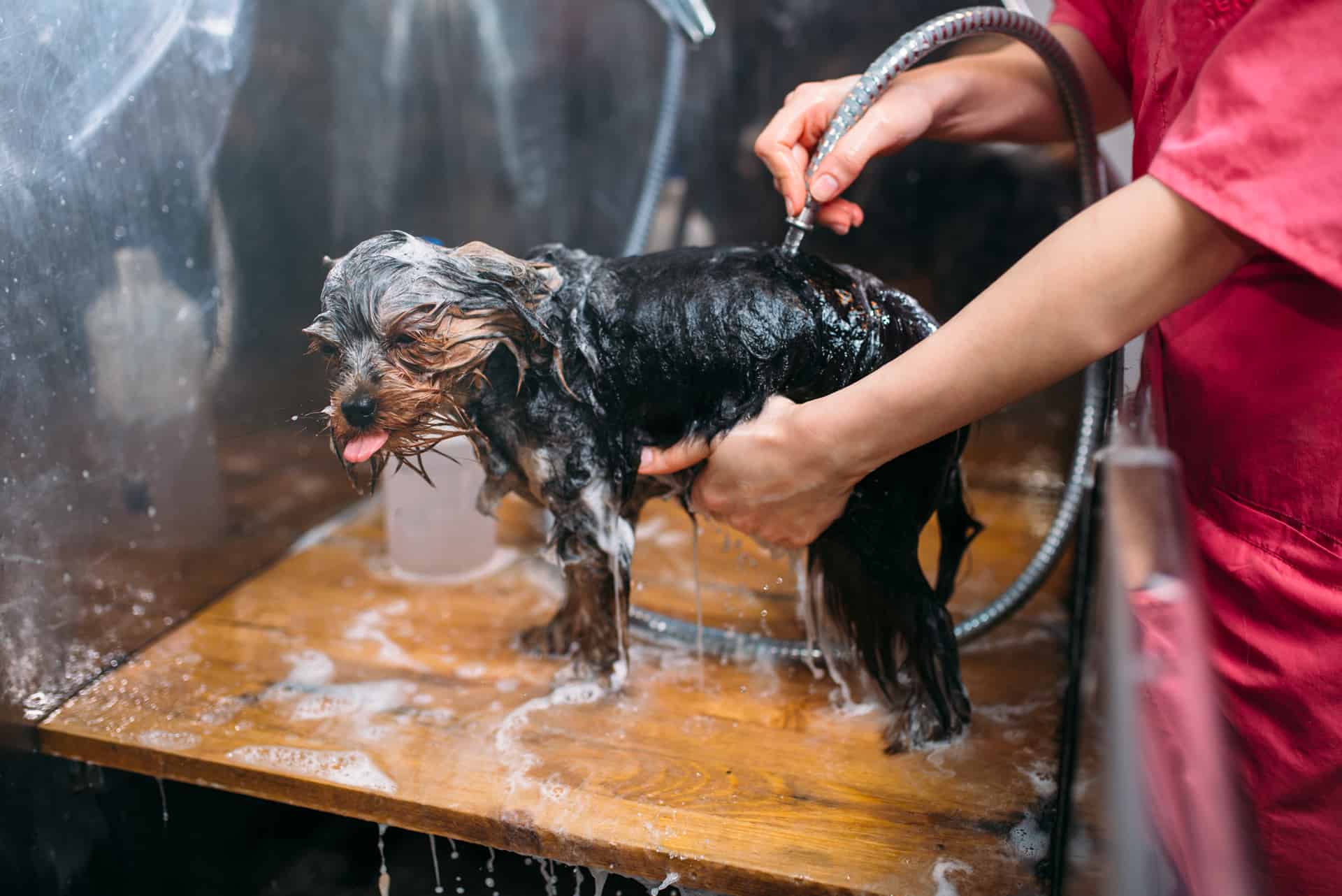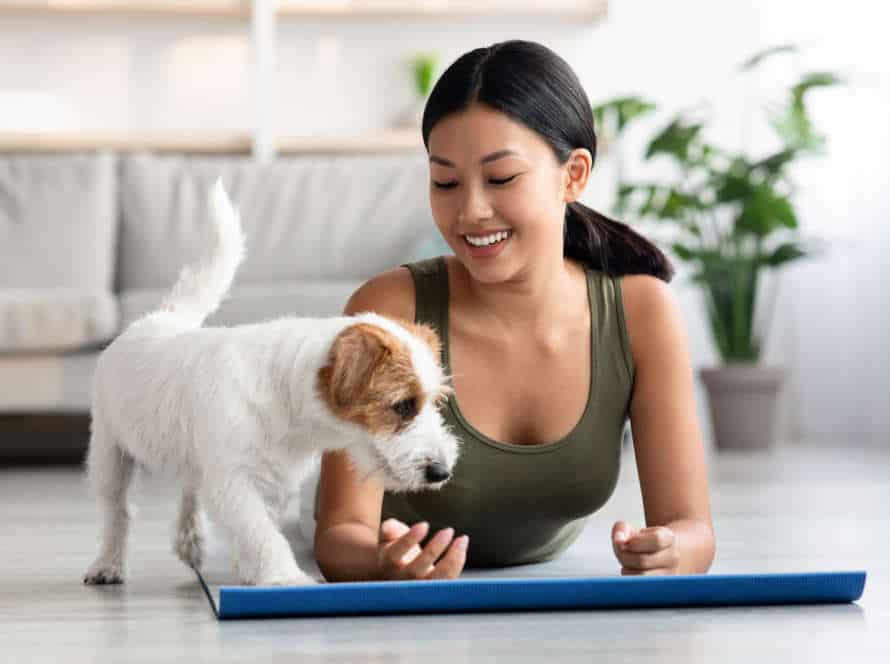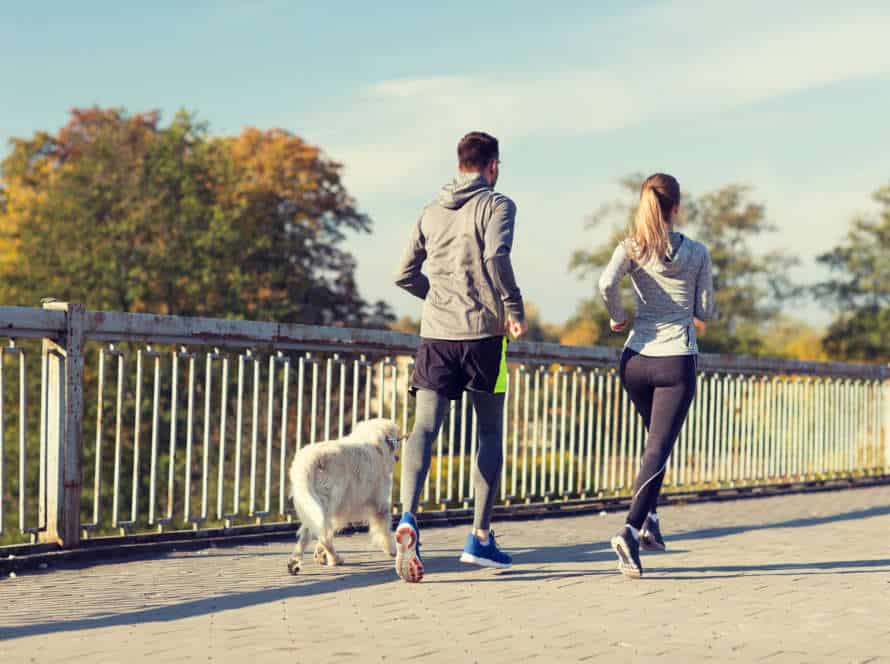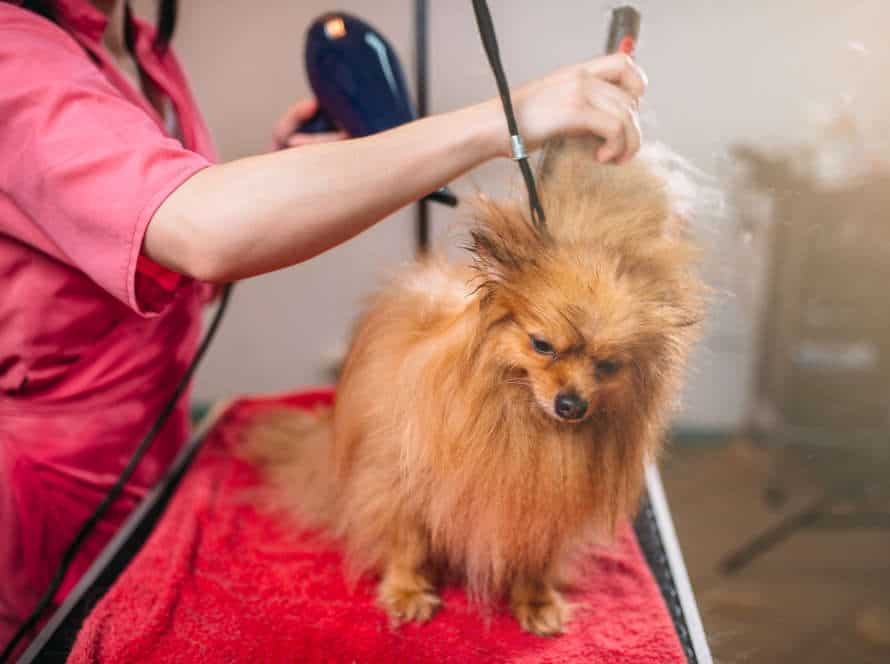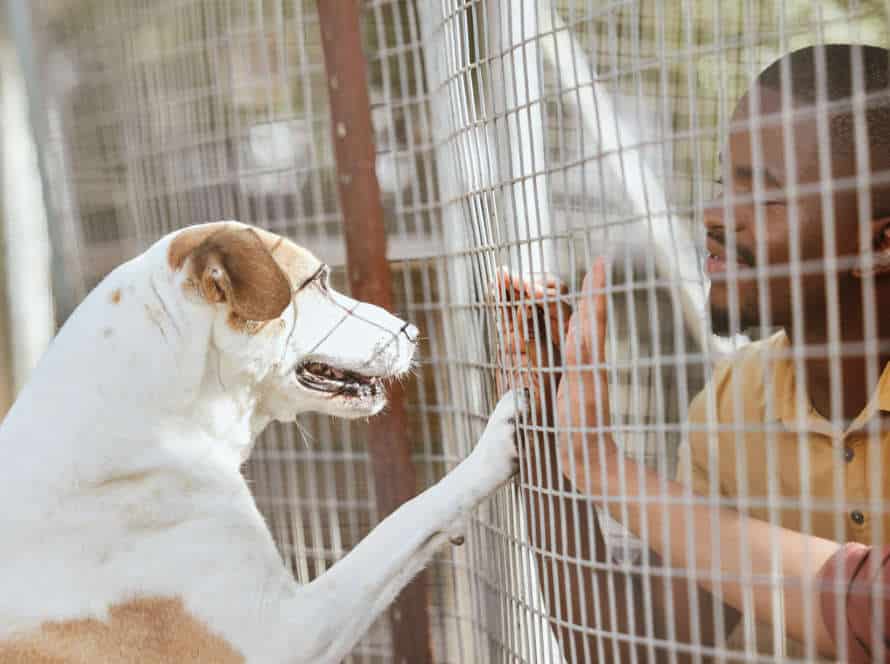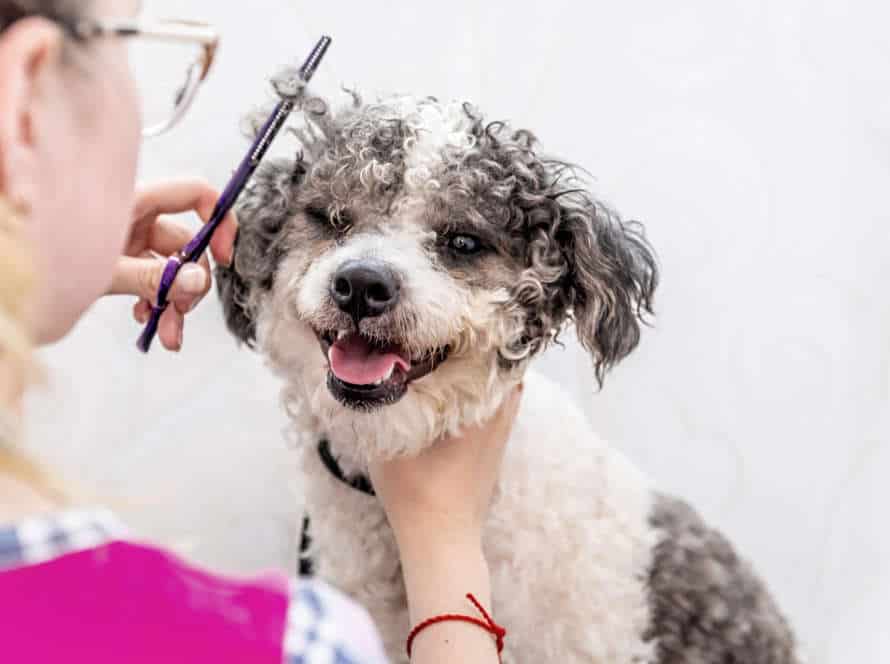The Dog Owner’s Guide to Grooming Basics
Grooming your pup is essential for their wellness, comfort, and cleanliness. Here’s some basic info for dog owners:
- Brushing: Brush regularly to remove fur, dirt, and bits from their coat. This also helps spread natural oils, good for skin and coat!
- Bathing: Bathe your pooch no more than once a month with a dog-specific shampoo. After the bath, watch their behavior and look to make sure they’re comfy.
- Nail trimming: Trim their nails every 2-3 months for paw health. Use clippers or a Dremel tool.
- Teeth cleaning: Brush their teeth 3 times/week with a soft-bristled toothbrush and dog-specific toothpaste.
- Ear cleaning: Wipe dirt off once/week with a cotton swab and water. Don’t overclean!
These tips will make your pup happy, healthy, and content.
Pro tip: Research your pup’s breed and grooming needs to give them the best care.
Essentials of dog grooming
For the wellbeing of your pup, regular grooming is a must! It’s not only about giving your furry friend a bath and brushing their coat; nail trimming, ear cleaning, and tooth brushing are also key. This article will give you the basics of dog grooming so you can get started!
Understanding the dog’s coat type
It’s important to know your pup’s coat type for proper grooming. There are three main types: Smooth, Double, and Wire.
- Smooth Coats have short and shiny fur that needs regular brushing.
- Double Coats have two layers – a short undercoat and a longer topcoat. Brushing is important to stop matting and shedding.
- Wire Coats need regular trimming to keep their thick, rough coat in check.
By knowing your dog’s coat type, you can use the best grooming practices and products to keep them comfortable and healthy.
Knowing when to brush or comb the dog’s coat
Knowing when to brush and comb your pup’s coat is important for grooming. It depends on breed, type of fur, and the season. Here are some tips to help you out:
- Long and thick coats need daily brushing. Use a slicker brush and metal comb to remove any loose fur.
- Short and smooth coats need less frequent grooming. Use a rubber brush or mitt to remove dead fur and massage the skin.
- If they shed a lot, brush and comb more during their shedding season. A deshedding tool can help get rid of the undercoat.
- Remember to brush or comb before bathing. This will get rid of loose fur and mats.
- Bonus: Regular brushing and combing not only keeps your pup’s coat healthy, but also helps you bond with them!
Importance of regular bathing and drying for dogs
Grooming is essential for every dog owner to ensure their pup’s health, happiness, and looking beautiful. Bathing and drying are important parts of this! Bathing gets rid of dirt, dead skin cells, and parasites. Drying reduces skin irritation, fungal and bacterial growth, and infections. Here’s why regular bathing and drying matter:
- Stop skin infections by removing allergens, microorganisms and parasites.
- Control shedding with moisturized skin.
- Get rid of odors so your pup smells fresh.
- Identify and treat skin problems early.
- Reduce allergies and itchy skin with frequent baths.
Regular grooming is a must for all dog owners! Keep your pup healthy, happy, and looking beautiful.
Tools required for grooming
Grooming a pup can be tricky. But, with the correct tools and understanding, it can be a breeze and fun! Having the right tools makes it even more convenient and entertaining. You’ll need the right tools and products to get started. This includes:
- Brushes
- Combs
- Scissors
- Clippers
- Shampoos
- Conditioners
Here’s our guide to the essential tools and supplies for dog grooming.
Choosing the right brush or comb for your dog
Choosing the best brush or comb for your pup is important. Here’s how to select the best grooming tool.
For long, silky, or curly hair, use a slicker brush. These have fine, short wires close together to remove tangles and mats without harming the topcoat.
For medium to long hair with shedding, use a pin brush. It has long, thin, flexible wires with rubber ends that’s gentle on skin and fur.
For short haired breeds, use a bristle brush. The soft natural bristles remove dead hair and keep the coat shiny.
For Huskies, Malamutes, and German Shepherds, use a rake. The long and flexible teeth reach deep into the undercoat and stop matting.
Pro-tip: Hold the base of your dog’s hair while brushing to avoid tugging and pain.
Selecting the right shampoo and conditioner for your dog
Choose the right shampoo and conditioner for your pup! Think about their skin type, coat length and allergies.
- If their skin’s sensitive, hypoallergenic or medicated shampoo is best.
- For pooches with long fur, a detangling conditioner will make grooming easier.
- Certain shampoos can protect against fleas and ticks, while moisturizing or deodorizing shampoos are great for others.
- Check the label to make sure it’s safe and doesn’t have any dangerous chemicals.
Conditioning the coat afterwards will make it shiny, smooth and easy to brush. Always follow the manufacturer’s directions when using grooming products!
Grooming your dog’s nails with clippers or grinders
Grooming your pup’s nails is essential for their health. You can either use clippers or grinders.
For clippers:
- Get clippers, styptic powder and treats for your pup.
- Make sure they’re relaxed.
- Securely hold their paw and clip the tip of the nail at a 45-degree angle.
- Avoid the quick. If you cut it, use styptic powder to stop the bleeding and give them a treat.
For grinders:
- Get a grinder, file and treats.
- Make sure they’re familiar with the sound of the grinder.
- Securely hold their paw and use the grinder to file the nail slowly.
- Avoid overheating and damaging the quick.
- Treat them after the grooming session!
Different types of grooming techniques
Grooming your dog is important for any animal owner. It not only keeps them healthy, but can make them look better too! There are different techniques used to groom a dog, depending on their breed, size, and coat. These techniques can be basic or advanced. Let’s explore the different grooming techniques and how they keep your pup looking and feeling great!
Brushing and combing techniques for different types of coats
Coat care for your pup can be tricky–especially if you don’t know the right techs. Here are some brush & comb tips for various coat types that all dog owners should know.
Short coats:
Rub-brush or bristle-brush to get rid of fur and dirt. These coats need only minimal grooming–just use a soft cloth to spruce ’em up.
Medium coats:
Undercoat rake or slicker brush to untangle & un-mat. Brush against the fur direction to remove dead fur and dirt. Comb to smooth out rough spots.
Long coats:
Need regular grooming to stay in good shape. Start with a detangling spray, then slicker brush to remove mats. Finish with combing to smooth out rough areas.
Curly coats:
Need regular brushing to avoid matting. Slicker brush to get rid of tangles, then comb to smooth out tough areas. Detangling spray makes brushing easier.
Thick coats:
Undercoat rake to rid shedding fur. Slicker brush to take out dirt and comb to make the coat smooth.
Use the right tools & techniques and your furry friend’s coat will be healthy & shiny!
Using scissors or clippers to trim your dog’s hair
Groom your pup with scissors or clippers – it’s one of the most common methods. But, pick the right tools and follow the rules to avoid any harm. Here are some tips:
- Detangle any knots or mats in fur first, with a comb or slicker brush.
- Choose sharp scissors or clippers that don’t tug or pull the hair.
- Use a comb or guide for an even trim.
- Trim in sections and go with the direction of hair growth.
- Be extra careful when trimming near eyes, ears, or paws.
Once done, give your pup a bath and dry them off. Don’t forget to reward them with treats and praise – it’ll make the experience enjoyable for both of you.
How to clean and maintain your dog’s ears and teeth
Keeping your pup’s ears and teeth clean and healthy is super important. Here are a few tips to help you out:
Ears:
- Use a soft, clean cloth or cotton ball to wipe the outside of their ears.
- No cotton swabs or inserting anything into the ear canal – this could cause injury or infection.
- If your pup is liable to ear infections, talk to your vet about a safe and effective ear cleaning solution.
Teeth:
- Brush their teeth regularly with a canine toothbrush and toothpaste.
- Give them dental treats or toys to clean and freshen their breath.
- Schedule regular dental check-ups with the vet – this will help to identify and address any issues before they become serious.
Doing these grooming tasks regularly will keep your pup happy and healthy for years!
Handling difficult situations
Grooming can be tricky when your pet’s anxious or uncooperative. As a dog owner, it’s important to be ready. Here are some tips on how to handle tough grooming situations:
- Get your pet calm and ready.
- Be patient and understanding.
- Take breaks when needed.
- Use treats as rewards.
- Make it fun!
How to deal with matted fur, tangles or knots
Matted fur can be painful for your pup and needs attention fast. Here are some tips to help out:
- Get a slicker brush and start at the tips of the fur, working your way up to the roots. Brush until the bristles move easily.
- If the mat is too tight, use scissors. Just be careful not to cut their skin.
- Don’t use water as it will make mats tighter. Use detangling spray or conditioner to soften before you brush.
- If your dog has a lot of mats, get a professional groomer to trim or shave the fur. Not only will this get rid of the mats but also reduce future matting.
Regular grooming and care will help keep your pup’s coat healthy and happy.
Managing excessive shedding or grooming anxiety
Excessive shedding and grooming anxiety can be a big problem for dog owners. But, there are steps you can take to manage it. Make grooming a positive experience for your pup.
- Regular brushing and bathing are essential. You can use tools like shedding blades or deshedding gloves.
- Use positive reinforcement techniques like treats and praise. This can help ease grooming anxiety and build a stronger bond between you and your pet.
- Schedule grooming times when your dog is relaxed. After a walk or playtime is a great time.
If the anxiety persists, talk to a professional groomer or vet for help.
Addressing fleas and ticks
Fleas and ticks can be a real bother to pets and owners. Grooming basics for dog owners should include dealing with these pests. Here are some tips:
- Regular grooming and brushing are essential, as they help detect fleas and ticks early and stop them from multiplying.
- Various over-the-counter and prescription treatments are available. Ask your vet which is best for your dog.
- Clean their living area, including bedding, to avoid an infestation.
- Check your dog regularly for signs, like excessive itching or bumps.
- Take preventive measures, like avoiding areas known for fleas and ticks, keeping their living space tidy, and using preventive treatments.
- Pro tip: Keep your pup groomed and get advice from your vet.
Professional grooming services
Professional grooming services can be awesome for your pup! A groomer can help with brushing, bathing, trimming nails and cleaning ears. Plus, they have special advice and techniques to help you groom your pup.
Let’s learn more about professional grooming services!
Understanding the importance of professional grooming
Professional grooming services are a must for keeping your pup’s health in check. Regular grooming can bring a clean and healthy coat, skin, and overall wellbeing.
Bathing, haircuts, nail trimming, and ear cleaning should be done by trained pros. They have the right know-how, experience, and tools to make sure your dog is comfortable throughout.
In addition to the physical benefits, professional grooming can also provide mental stimulation, reducing anxiety and stress.
By visiting a professional groomer often, you can easily spot any potential health issues like lumps, ear infections, and more. This way, you can take proper vet care.
All in all, professional grooming is crucial for your dog’s wellbeing. It’s not just good for your pup, but for you too!
Choosing the right grooming service and groomer
Choosing the perfect grooming service and groomer is important. For your pet’s best care and grooming experience, here are some tips:
- Do research and read online reviews about local grooming services.
- Find salons that specialize in your dog’s breed and have experience with dogs of similar size/coat.
- Make sure the salon is clean, properly maintained and has modern grooming tools/products.
- Meet the groomer and ask about their experience, training and approach to handling dogs.
- Check the service includes things like bathing, grooming, nail trimming and ear cleaning.
Pro Tip: Regular grooming keeps your pup healthy, happy and looking great. Book a grooming appointment every 4-6 weeks to maintain their coat and hygiene.
Things to consider while visiting a grooming salon or spa
When choosing a grooming salon or spa for your furry friend, take into account a few key factors. Ensure a positive experience by considering:
- Staff qualifications – Are they certified and experienced with different breeds and temperaments?
- Safety measures – Non-slip mats and secure restraints in place?
- Services offered – Can they meet your pup’s needs?
- Cleanliness – Check the salon’s cleanliness and disinfecting protocols.
- Pricing – Understand the pricing structure and if it fits your budget.
These considerations will help you find a salon that gives your pup the care and attention they deserve.
Frequently Asked Questions
Q: How often should I groom my dog?
A: The frequency of grooming depends on the breed of your dog and its coat type. Dogs with longer hair or double coats will require more frequent grooming, while some breeds with shorter hair may only need to be groomed every few months.
Q: What are the basic tools I need to groom my dog?
A: Some basic grooming tools include a brush, comb, nail clippers, and shampoo. Depending on the breed and hair type, you may need additional tools such as a de-shedding tool or clippers for trimming hair.
Q: How do I make sure my dog is comfortable during grooming?
A: It’s important to introduce your dog to grooming at a young age and make it a positive experience by rewarding with treats or praise. Take breaks frequently and make sure not to groom for too long at one time. Keep the environment calm and gentle.
Q: Can I groom my dog myself or should I hire a professional?
A: It is possible to groom your dog yourself if you have the right tools and knowledge, but if your dog has a difficult coat or may become aggressive during grooming, it may be best to hire a professional groomer.
Q: What if I accidentally cut my dog’s nails too short?
A: If you accidentally cut your dog’s nails too short and they begin to bleed, use a styptic powder or cornstarch to stop the bleeding. Apply pressure to the nail for a few minutes and monitor the area for any signs of infection.
Q: How can I prevent matting in my dog’s coat?
A: Regular brushing and combing can help prevent matting in your dog’s coat. For dogs with longer hair, it may be necessary to trim the hair around the ears and paws to prevent matting in those areas.

